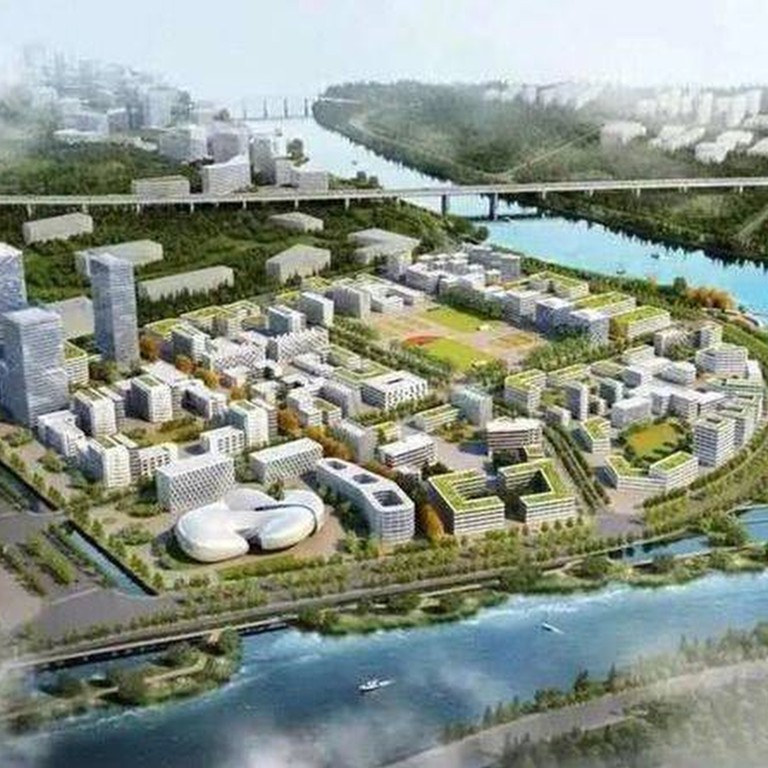
China’s ‘MIT of Greater Bay Area’ is a bid to turn southern region into innovation powerhouse
- A new university is planned to open in Dongguan in 2023, and offer a focus on science and technology to enhance the area as an economic and business hub
- One unemployed scholar said a new university would push up house prices, creating new hardship for low-paid workers
The institution will be led by top mathematician Tian Gang and administrator Dai Changliang, who have worked for decades at Peking University.
Tian, who is heading the preparatory team for the new university, is the former vice-president of Peking University and a member of the American Academy of Arts and Sciences who has won many awards for his mathematical contributions. Dai, who will serve as a “second-level” head at the institute, was previously the deputy head of the human resources department of Peking University.
As well as hiring experienced leaders, Dongguan city will invest at least 10 billion yuan (US$1.5 billion) to build the university and has allocated more than 330 acres of land for the project.
Dongguan Mayor Xiao Yafei told the local media that constructing an innovative university was the best way to achieve cooperation with other cities in the GBA, including Hong Kong and Macau.
Can the GBA's promise of opportunity remain after the pandemic?
In a previous interview with mainland media, Deng Jiangnian, head of the GBA Research Institute, a think tank founded by the Guangdong provincial government, said GBA University would differ from other local universities because it would “first, be international in its operation and secondly, serve the local community”. He said the university should focus on science and technology and become the “MIT of the GBA”.
While Dongguan was a manufacturing centre, it lacked collaboration on research and industry with other areas, and the university could provide support for this in future, Yang said.
Peng Peng, executive chairman of the Guangdong Society of Reform, a think tank connected to the provincial government, said the country’s industrial transformation had convinced the government of the need to cultivate skilled talent such as elite engineers and senior mechanics at universities.
“The construction of the GBA University is government led, with the help of the resources of famous universities. It is not comparable to any other local private universities,” Peng said.
“Dongguan has the financial resources, of course, as a world-class manufacturing base, and the support of the Guangdong provincial government. Financial resources, industrial demand and the faculty and management personnel are very important,” Peng said.
Hong Kong can be the Greater Bay Area’s San Francisco, US think tank says
GBA University will not be the only new university in town. In recent years, there has been an accelerating trend of Hong Kong and Macau universities building campuses in Guangdong.
The Hong Kong University of Science and Technology in Guangzhou and the Hong Kong Polytechnic University in Foshan are both under construction, and the Chinese University of Hong Kong in Shenzhen recently started taking enrolments.
Chinese authorities have been pushing for vocational education reforms in recent years, hoping to transform the former “factory of the world” into a manufacturing powerhouse, addressing the problem of overpopulation in some industries accompanied by a shortage of senior, skilled workers.
Summer Hou, 30, a high school teacher living in Dongguan said: “I look forward to this ‘MIT in the GBA’, so my students will have one more choice and a good university in their hometown.”
Dongguan sees rise in home prices amid increased liquidity, speculation
However, Cindy Gao, a Dongguan-based young sociology scholar looking for a job, was more sceptical.
“As far as I know, many enterprises in Dongguan just need ordinary industrial workers,” the 31-year-old said. “It seems that the university is in line with those high-end laboratories in Songshan Lake, so it cannot help the ordinary manufacturing industry.”
Gao said she expected housing prices in Dongguan to continue to rise with the establishment of the university. “The situation of low-paid workers is increasingly hard,” she said.

